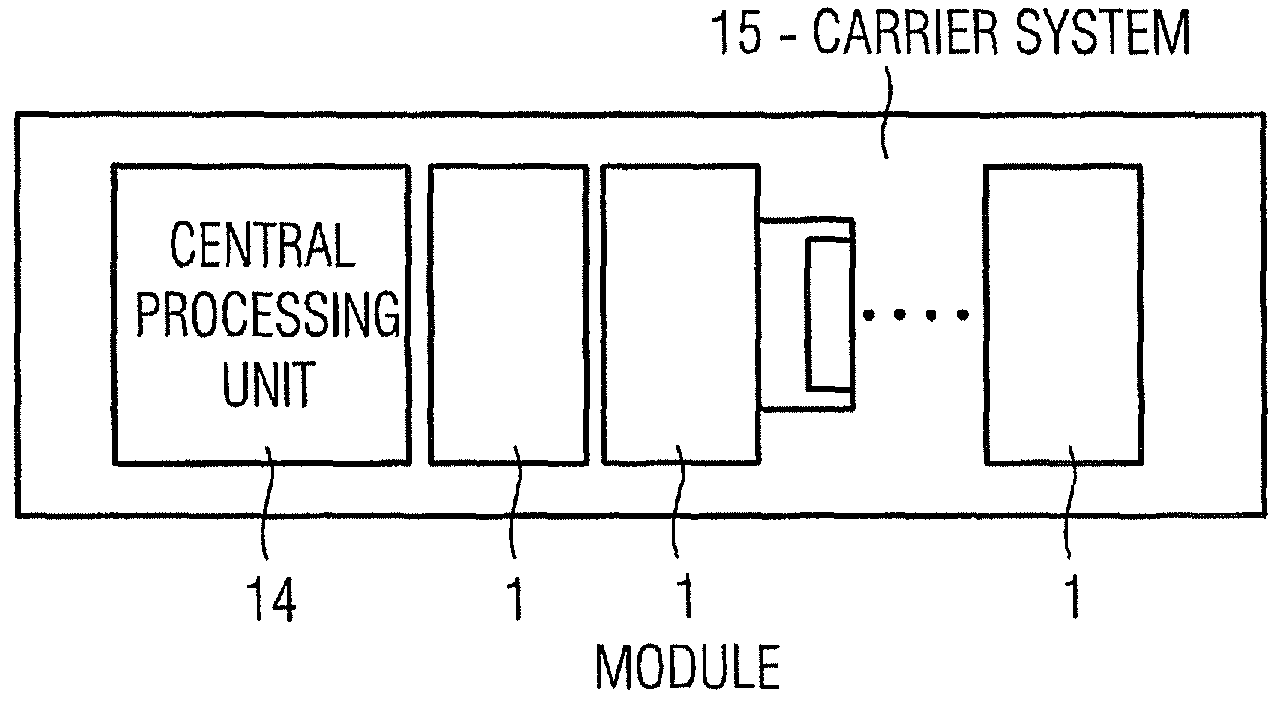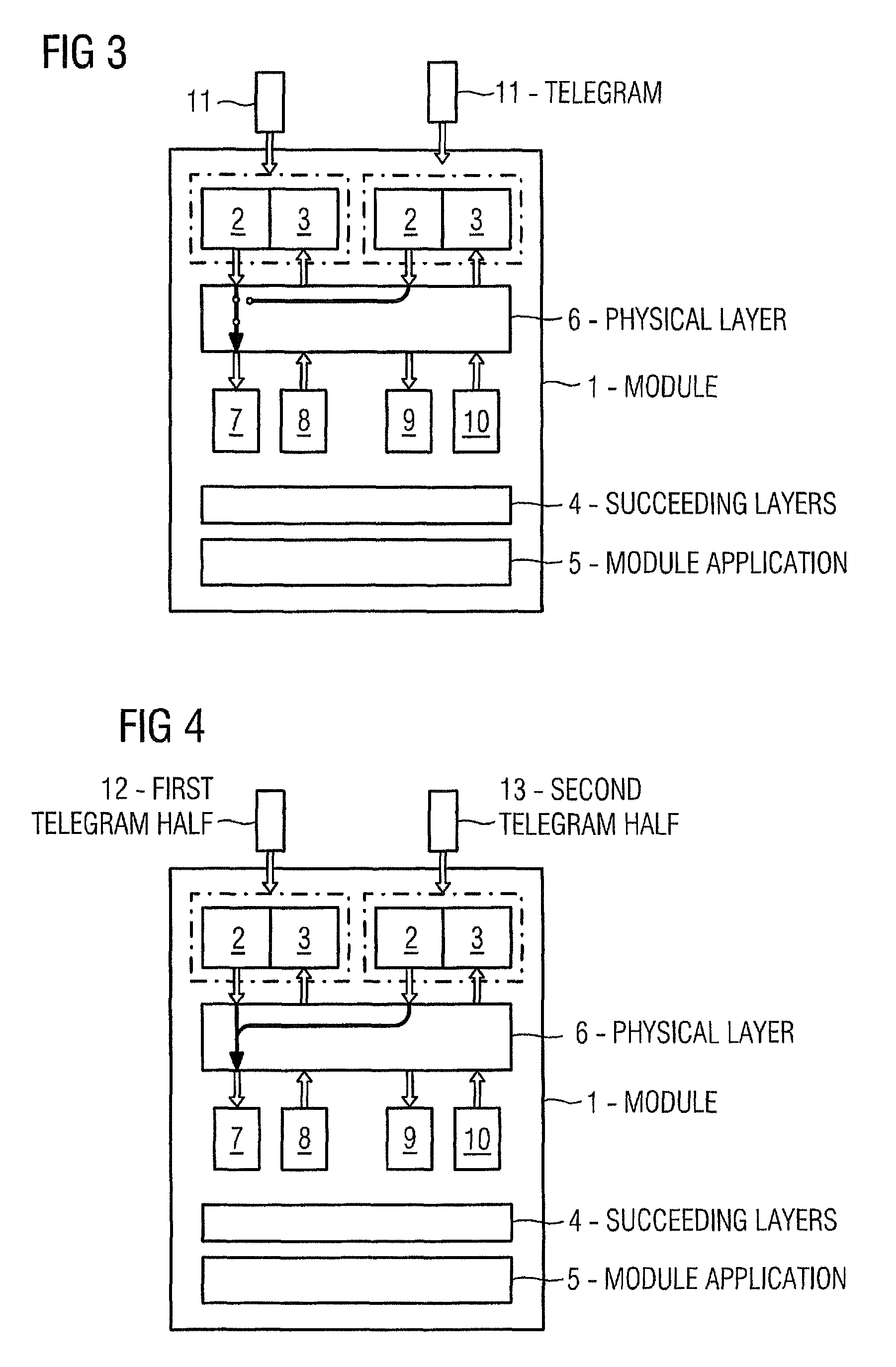Communication system for flexible use in different application scenarios in automation technology
a communication system and automation technology technology, applied in data switching networks, program control, instruments, etc., can solve the problems of relatively high response time, low performance, and relatively high pri
- Summary
- Abstract
- Description
- Claims
- Application Information
AI Technical Summary
Benefits of technology
Problems solved by technology
Method used
Image
Examples
Embodiment Construction
[0030]FIG. 1 shows a schematic representation of an inventive module 1. Said module 1 has two receivers 2 and two transmitters 3 which are combined into two transmitting / receiving devices called ports P1, P2. In this arrangement transmitters 3 and receivers 2 take on the function of a “serializer” and “deserializer” respectively as interfaces to the serial communication system. Telegrams received at the ports P1, P2 are processed further by the physical layer differently depending to the configuration, before they are made available to the succeeding layers 4 and finally the module application 5. In this scheme the succeeding layers 4 consist, according to the OSI model (Open Systems Interconnection Reference Model), of: data link layer, network layer, transport layer, session layer, presentation layer and application layer. In this case the configuration of the physical layer according to the invention has, with one exception, no effect on the succeeding communication layers 4 or, ...
PUM
 Login to View More
Login to View More Abstract
Description
Claims
Application Information
 Login to View More
Login to View More - R&D
- Intellectual Property
- Life Sciences
- Materials
- Tech Scout
- Unparalleled Data Quality
- Higher Quality Content
- 60% Fewer Hallucinations
Browse by: Latest US Patents, China's latest patents, Technical Efficacy Thesaurus, Application Domain, Technology Topic, Popular Technical Reports.
© 2025 PatSnap. All rights reserved.Legal|Privacy policy|Modern Slavery Act Transparency Statement|Sitemap|About US| Contact US: help@patsnap.com



